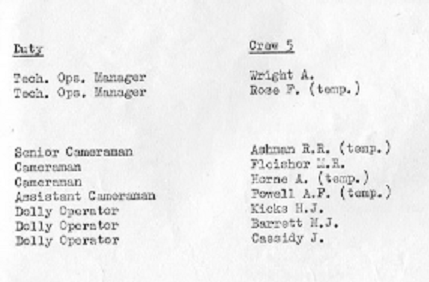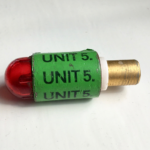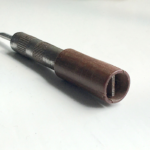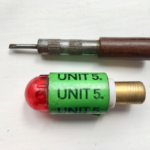Geoff Hawkes
Following the talk about the origin of the term “scanner”, I wondered why the equipment boxes on the OB trucks were called “ditty-boxes”, quaint when “ditty” is the name for a short simple song.Perhaps our OB colleagues and others would like to think on that and how far it goes back, though I doubt if it will need as much discussion as previously,
Alan Taylor
I was told it was a Navy term for a box of bits.Geoff Hawkes
From what I found in the Concise OED, I think you’re right. I wondered who decided to adopt the name for BBC OB use and how it became generally accepted. Just one of those things, I suppose.Pat Heigham
Definitely Naval – confirmed by an ex-RN friend.David Denness
Anyone who has ever visited the “Mary Rose” at Portsmouth Naval site could have told you that!Alan Taylor
Television really took off in the 1950s and 1960s. I would assume that most people coming into the business would have done some form of National Service and that slang or terminology from different services would have crept into the television industry that way. Other words entered broadcasting terminology via Post Office engineering. I was told that referring to a small screwdriver as a tweaker is a Post Office term.I’ve always been fascinated by etymology and one of the more plausible explanations offered to me was that the word was a shortened version of “oddity”. It certainly fitted in with the way that a ditty box was used by sailors either for miscellaneous personal effects, or for tools and accessories.
Similarly, the vehicle accompanying the scanner and carrying the cables and other equipment is referred to as a tender. That’s a word used by sailors for a boat which supports another boat, or railway engineers use the word to describe a small wagon supporting the locomotive. I’d be interested to know when OBs first used tenders because descriptions of early OBs referred to just three vehicles being used, the scanning vehicle, the transmitting van and a mobile generator van. Presumably the cameras and cable drums travelled within those vehicles, hopefully well separated.
Robin Sutherland
Pretty certain it derives from the Naval term for a box to keep a sailor’s personal effects in.On OBs in olden days each camera had its own ditty box containing ancillary bits like headphones, viewfinder hood etc depending on the type.
In EMI 2001 days it would have held viewfinder hood, cans and zoom and focus controls, as OB EMIs remoted the focus control onto the pan bar for greater flexibility. OB EMIs also had a simplified two position viewfinder mounting, one giving full rotate and a park position for transit.
We also removed the flimsy plastic top cue light cover which got easily damaged during rig and derig. Someone discovered a strong red glass Lucas truck vehicle taillight cover which fitted perfectly and was really robust.
Alec Wright, our senior cameraman on London 2, was sometimes a bit slow in crewing shows up, so we relabelled the ditty boxes with crew names rather than Cam 1, 2 etc to concentrate his mind on crewing up before we rigged. Worked a treat and meant you always had your own cans to wear.
I’ve been helping Chris Wickham’s wife Heather to sort out lots of Chris’s tools and other effects as she tries to do a major declutter. I came across a couple of small items instantly recognisable to OB types that you may not have come across.
First was a tool made up in OB workshops to help with EMI 2001 lineups on site, beautifully made from steel and paxolin with a hooded screwdriver at one end for easy tube focus adjustment and a small tweaker on the other end for linearity controls. We had our own individual issue and very useful it was too.
Second items from LDK5 triax days was a “bright eye” cable tester which was plugged into the camera end of a powered up triax cable. If it lit up you had continuity to the scanner. It revolutionised speedy fault finding on long cable runs and again we all had one.
DOLLIES
(Feature) Film Cameras were mounted on “Dollies” which in turn ran on tracks. To get a larger picture of the subject (without changing lens) or to get a larger image on shot,, the camera dolly moved closer to the subject – or “tracked in”. To make the subject smaller on shot, or to get a wider view, the dolly was moved along the track away from the main subject – or “tracked out”.Brian Curtis
Whilst we are on the subject of Television (and Film too) terms how did a "camera crane" or as Wikipedia puts it "wheeled cart" become known as a "dolly". I know this is maybe more common in the film industry and possibly in America too but seems to me we use the term "track in" and "dolly in" interchangeably?Dave Newbitt
I think a dolly is pretty much anything on wheels for moving hefty objects – might be a grand piano, might be a camera.Alec Bray
"Dolly" was (always) common in TV.Crew list 1st May 1962 – on the camera side there were Dolly Operators:

Although, as I recall, we only ever “tracked in” and “tracked out” (1963-1967) to go forward and back – but of course there were NO (camera) tracks!
Tony Grant
Well, they didn’t just ‘track in/out’ since there was the Heron to contend with, and they did have ‘tramlines’ although these were lines of camera tape on the floor.
Alec Bray
Not in my day! It was a “Ladder” – on the right hand side, marked out with big yellow wax crayons.
This caused a problem with one senior cameraman … the story told in full elsewhere, but briefly, he kept changing camera position when he was on the front end of a Heron. You’d put down a Ladder, and the next minute a beckoning finger would indicate a gnat’s to the left or right. You would end up with a mess of crayoned ladders (quite difficult to erase), and end up not knowing which one was the true one.
The answer was – and as I have found from this site that others discovered this trick as well – to have a foot on the brake, and then go full forward on a finger beckon. The Heron lurched, the cameraman was happy, we still had the same ladder….
Tony Grant
Ah yes, timber crayon, yellow in early nineteen-sixties with blue added late nineteen-sixties (plus red at a later date). But this could be washed off when set designer decided to have a quick floor paint before TX/TR. Mind you, if you’d used camera tape instead of crayon, woe betide you if you didn’t remove it all during derig.
Dave Mundy
Jolting the Heron to fool the man on the front that you had actually moved, as ordered, was very similar to the sound version.
For the sound version, please see: A game of KIM






